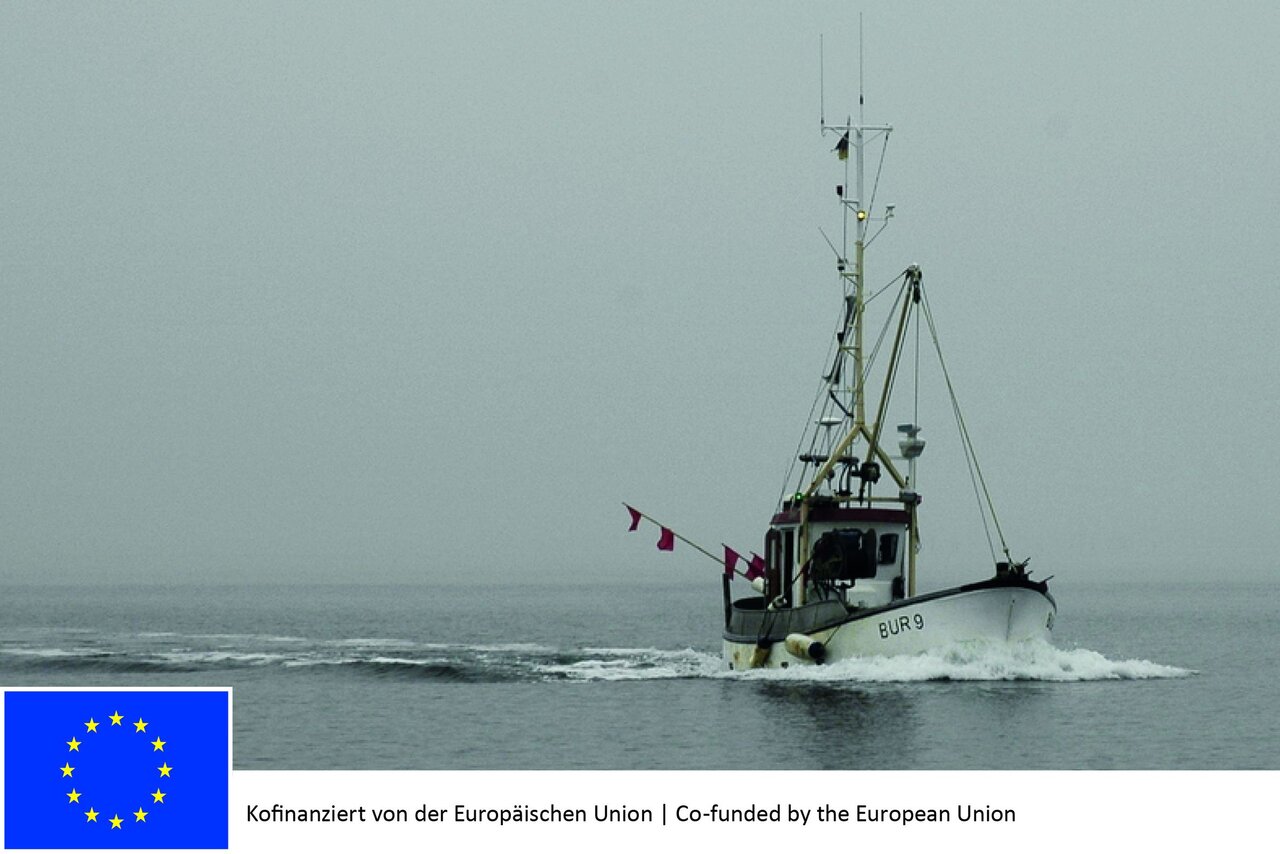Project
What is the catch of gillnet fishers?

DCF: (Data Collection Framework): survey of catches and bycatches of the German gill net fishery
The gillnet fishery is a central pillar of the German fisheries in the Baltic Sea. We regularly sample the catches and by-catches on board of gillnetters.
Background and Objective
The gill net fisheries are of great importance along the German Baltic Sea coast, both from a fishing and socio-economic point of view. In the past, little was known about the dynamics of these fisheries, except for the landings. Since several years we regularly have scientific observers onboard of vessels of this important fleet segment, for example to estimate discards.
The gill net fisheries generally are a very selective and environmentally sound catch method. However, the nets consist of very thin material that is virtually invisible for both fish and other animals. Harbor porpoises (Phocoena phocoena) or diving sea birds can entangle in the nets and drown. These bycatches are not intended by the fisher but could pose a threat to the affected populations of sea birds and marine mammals like harbor porpoises if too many specimens die as unwanted bycatch. Our scientific observers also document such bycatch events.
Approach
The sampling of the gill net fisheries is carried out by scientific observers which measure the catch on board of commercial fishing vessels. The data are mainly used to calculate discard ratios of the passive gear fisheries. In addition, documentation of the amount of unwanted bycatches may help to estimate the level of threat possibly affecting populations of sea birds and marine mammals. Both observer trips with and without bycatches are documented; this is important for extrapolations, because the vast majority of observer trips do not have unwanted bycatch.
Preliminary Results
Intensive sampling of the gillnet fishery improves our data base for stock assessment, forecasting and fisheries management. Furthermore, the documentation of incidental bycatch serves as an impact assessment of the impact of gillnet fisheries on birds and marine mammals (especially harbor porpoises and grey seals).
Thünen-Contact

Involved Thünen-Partners
- Conrad, FrankOF Institute of Baltic Sea Fisheries
- Dorrien, von, ChristianOF Institute of Baltic Sea Fisheries
- Dressler, SvenOF Institute of Baltic Sea Fisheries
- Hogh, ThomasOF Institute of Baltic Sea Fisheries
- Jankiewicz, TomOF Institute of Baltic Sea Fisheries
- Krumme, UweOF Institute of Baltic Sea Fisheries
- Velasco, Andrés OF Institute of Baltic Sea Fisheries
Funding Body
-
Federal Ministry of Food und Agriculture (BMEL)
(national, öffentlich) -
European Union (EU)
(international, öffentlich)
Duration
Permanent task 1.2001 - 12.2027
More Information
Funding program: EMFAF - Europäischer Meeres-, Fischerei- und Aquakulturfonds
Project status:
ongoing
Publications
- 0
Meyer S, Krumme U, Stepputtis D, Zimmermann C (2022) Use of a smartphone application for self-reporting in small-scale fisheries: Lessons learned during a fishing closure in the western Baltic Sea. Ocean Coastal Manag 224:106186, DOI:10.1016/j.ocecoaman.2022.106186
- 1
Håkansson KB, Mugerza E, Adamowicz M, Basterretxea M, Canha A, Christman M, Clarke L, Cloatre T, Couperus B, Craig J, Demaneche S, Dubroca L, Egekvist J, Elson J, Fernandes AC, Gitarakos G, Glemarec G, Krumme U, Stötera S, Wischnewski J, et al (2022) Working Group on Commercial Catches (WGCATCH; outputs from 2020 meeting). Copenhagen: ICES, 95 p, ICES Sci Rep 4(26), DOI:10.17895/ices.pub.19367822
- 2
Meyer S, Krumme U (2021) Disentangling complexity of fishing fleets: using sequence analysis to classify distinguishable groups of vessels based on commercial landings. Fish Manag Ecol 28(3):268-282, DOI:10.1111/fme.12472
- 3
Funk S, Krumme U, Temming A, Möllmann C (2020) Gillnet fishers’ knowledge reveals seasonality in depth and habitat use of cod (Gadus morhua) in the Western Baltic Sea. ICES J Mar Sci 77(5):1816-1829, DOI:10.1093/icesjms/fsaa071
- 4
Oesterwind D, Krumme U, Zimmermann C (2012) Zwischenbericht 2011: Pilotstudie zur Dokumentation von Seevogel und Meeressäugerbeifängen in der Stellnetzfischerei der Fischereigenossenschaft Freest im Gebiet um Rügen. Rostock: Thünen-Institut für Ostseefischerei

![[Translate to English:] [Translate to English:]](/media/_processed_/d/7/csm_Startseite-OF_03_c0dfd6e750.png)
![[Translate to English:] [Translate to English:]](/media/_processed_/a/3/csm_20181116-151457-Stella-Jerome-Fischfalle-Warnem%C3%BCnde-Dorsche-im-Netzk%C3%A4fig-5691_heller_3050c72fa2.png)




